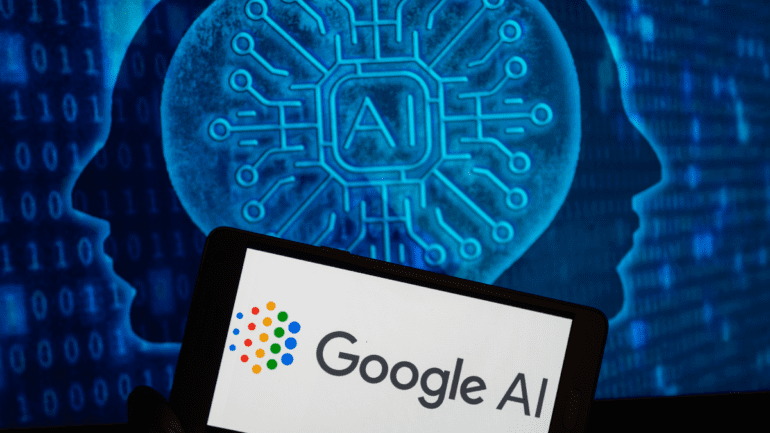TL;DR:
- Google introduces PaLM 2, a large language model (LLM), set to transform its services, particularly the cloud.
- The new AI-powered interface, powered by Duet AI, enhances productivity for cloud developers and users.
- Features include code assistance capabilities, generative AI chat assistance, and a no-code solution called AppSheet.
- Duet AI provides a conversational experience, simplifying the process of learning and deploying code in the cloud.
- It is trained on Google Cloud data to optimize deployment and provide accurate responses.
- Future iterations of Duet AI will focus on ongoing cloud management and site reliability engineering (SRE).
- Google aims to incorporate best practices, architectural insights, and cost optimization into Duet AI.
- AI is becoming the new interface for the cloud, seamlessly integrated into the user experience.
Main AI News:
In a groundbreaking move set to revolutionize the world of cloud computing, Google has announced the release of PaLM 2, its highly advanced large language model (LLM). This cutting-edge technology is poised to have a transformative impact on Google’s suite of services, with the cloud sector being a major beneficiary. Google’s integration of generative AI into its cloud platform through an innovative new interface powered by the remarkable Duet AI is set to enhance productivity for both developers and users.
The AI-powered interface introduces a host of exciting features. Code assistance capabilities will empower developers to write code efficiently for applications running on Google Cloud. Additionally, a new generative AI chat assistance function will provide invaluable support to cloud developers in finding solutions and facilitating the seamless construction and deployment of cloud applications. Complementing these features is AppSheet, an innovative no-code solution that enables users to effortlessly create cloud applications using natural language prompts.
“Duet AI for Google Cloud is truly about introducing an AI assistant to the cloud interface,” explained Richard Seroter, director of developer relations and outbound product management at Google Cloud, in an exclusive interview with VentureBeat. “Duet leverages the PaLM 2 model as its foundation but has been further enhanced and fine-tuned with Google Cloud content in mind.“
The potential impact of Duet AI on cloud management and development is vast. Regardless of whether users are novices or seasoned professionals in the cloud domain, navigating the complexities of this technology can be a daunting task. Seroter humorously compared the cloud learning curve to purchasing a new car, highlighting the fact that while one can simply hop in a car and drive without studying the manual extensively, cloud usage typically demands extensive documentation review.
Duet AI seeks to transform this experience by providing users with a conversational interface that simplifies the process of learning optimal code deployment and application management in the cloud. Rather than sifting through countless StackOverflow answers, Google search results, or instructional videos on YouTube, users can now ask questions directly within the cloud console and receive immediate answers.
“With an in-console chat that incorporates best practices, beginner tips, and expert guidance, individuals can navigate this immensely powerful cloud environment with confidence,” Seroter asserted, emphasizing the potential of Duet AI to empower users who may otherwise find the cloud intimidating.
A key aspect of Duet AI’s development involved training the model using Google Cloud data, ensuring optimal deployment for this cutting-edge technology. Google’s vast repository of documentation, encompassing well over a million pages, alongside code samples, reference applications, blog posts, and even YouTube video transcripts, provided the rich contextual information required for Duet AI to deliver accurate responses specific to Google Cloud.
While the initial release of Duet AI for Google Cloud primarily caters to developers, Google has ambitious plans to expand its functionality in the near future. The upcoming iterations will target “day two” operations, focusing on ongoing cloud management and site reliability engineering (SRE).
By providing best practices and architectural insights to ensure smooth operation beyond the initial deployment phase, Duet AI aims to facilitate the efficient functioning of cloud applications. Seroter envisions a future where Duet AI also plays a pivotal role in cloud cost optimization, empowering organizations to streamline their deployment and management of cloud infrastructure and applications.
“AI has become the new interface for the cloud,” Seroter proclaimed confidently. “It’s not an external entity; it’s woven into the very fabric of the cloud experience.”
Conlcusion:
The introduction of Google’s PaLM 2 large language model (LLM) and its integration into the cloud via Duet AI signifies a significant milestone for the market. This innovative technology brings forth a transformative shift in cloud development and management, empowering developers and users alike with enhanced productivity and a conversational interface. By streamlining code deployment, providing accurate responses, and offering valuable insights, Google’s advancements in AI are poised to reshape the market landscape.
The seamless integration of AI into the cloud experience heralds a new era where businesses can leverage powerful AI capabilities to optimize operations, drive efficiency, and unlock new opportunities for growth. The market can anticipate a surge in productivity, streamlined cloud management, and increased cost optimization as organizations embrace these cutting-edge advancements.

